

— Blogs —
—Products—
 Consumer hotline +8618073152920
Consumer hotline +8618073152920 WhatsApp:+8615367865107
Address:Room 102, District D, Houhu Industrial Park, Yuelu District, Changsha City, Hunan Province, China
Product knowledge
Time:2024-11-06 14:27:24 Popularity:1470
Soil moisture monitoring equipment is an essential tool in modern agriculture, environmental research, and water resource management, used to accurately measure the moisture content in the soil. These devices typically employ advanced technologies, such as Frequency Domain Reflectometry (FDR) or Time Domain Reflectometry (TDR) principles, to assess the soil moisture state. Below are some common categories of soil moisture monitoring equipment and their features:
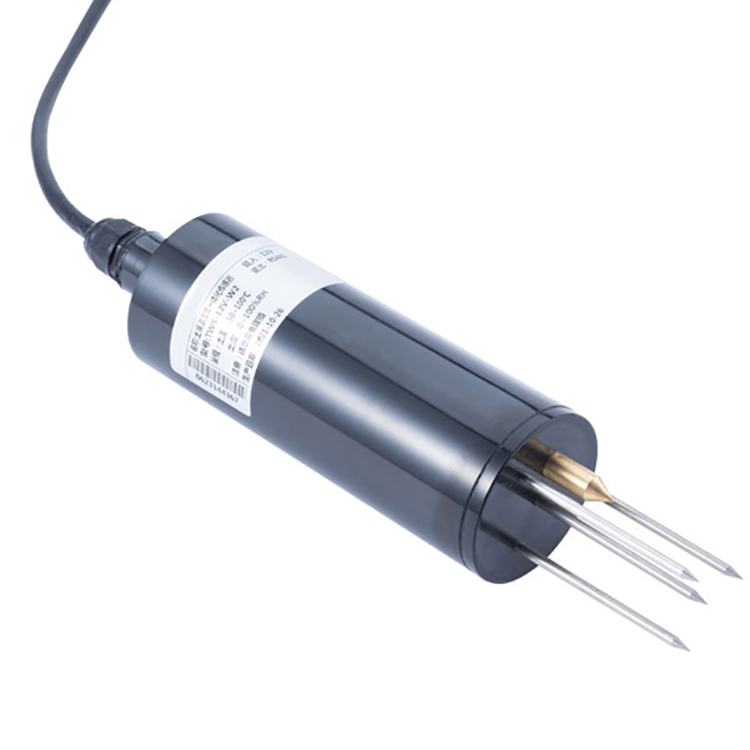
|
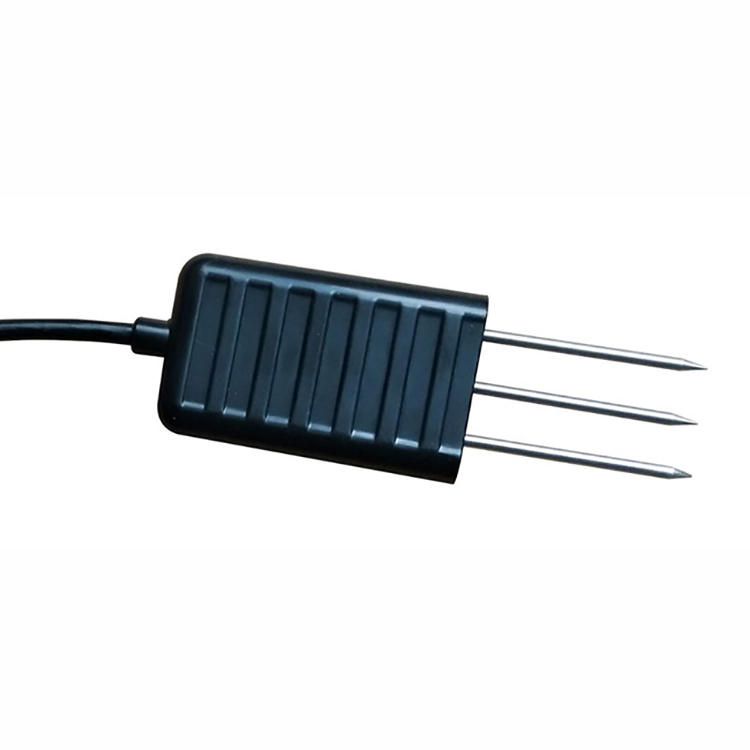
|
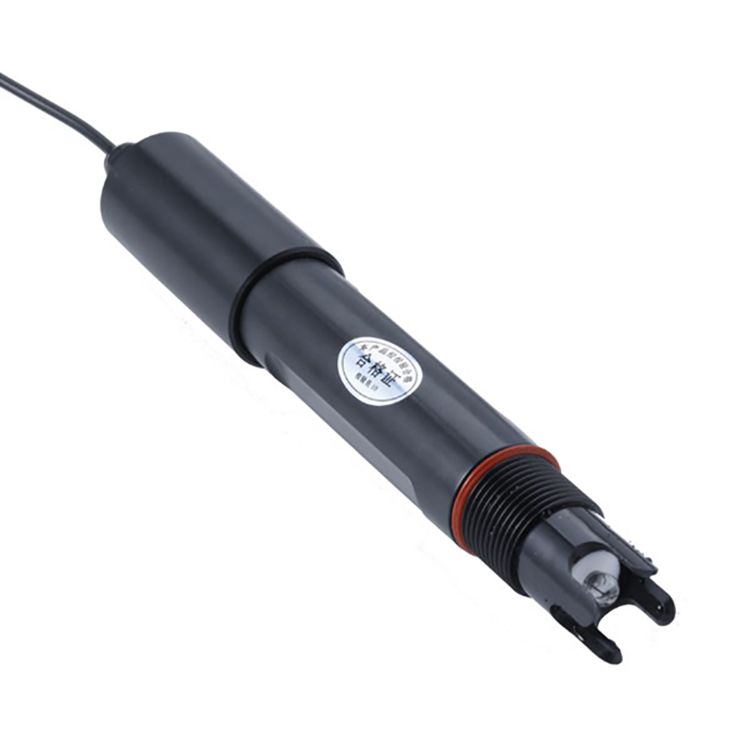
|
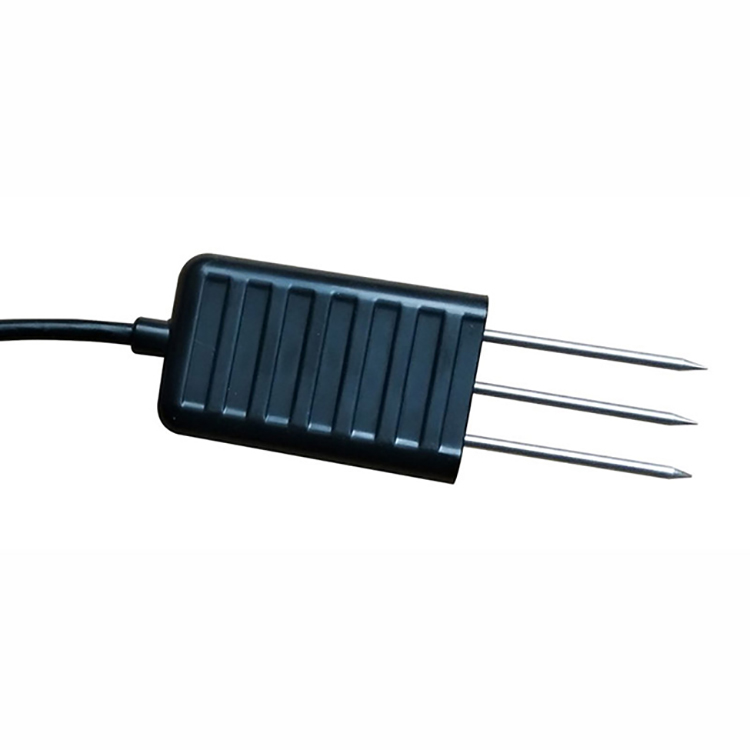
|
| Soil Moisture Temperature sensor | Soil NPK Sensor | Soil pH sensor | 3-in-1 Soil Temperature Humidity EC Sensor |
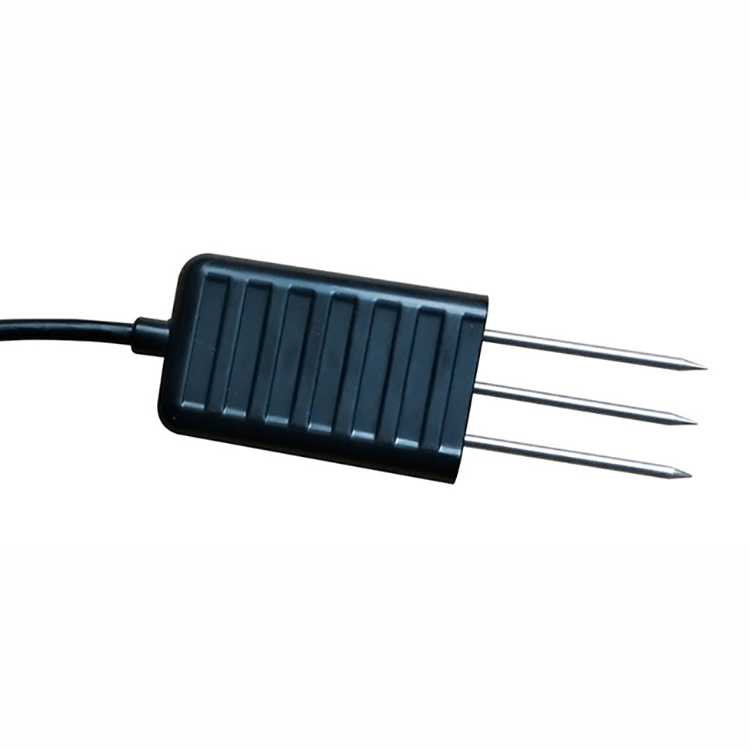
|
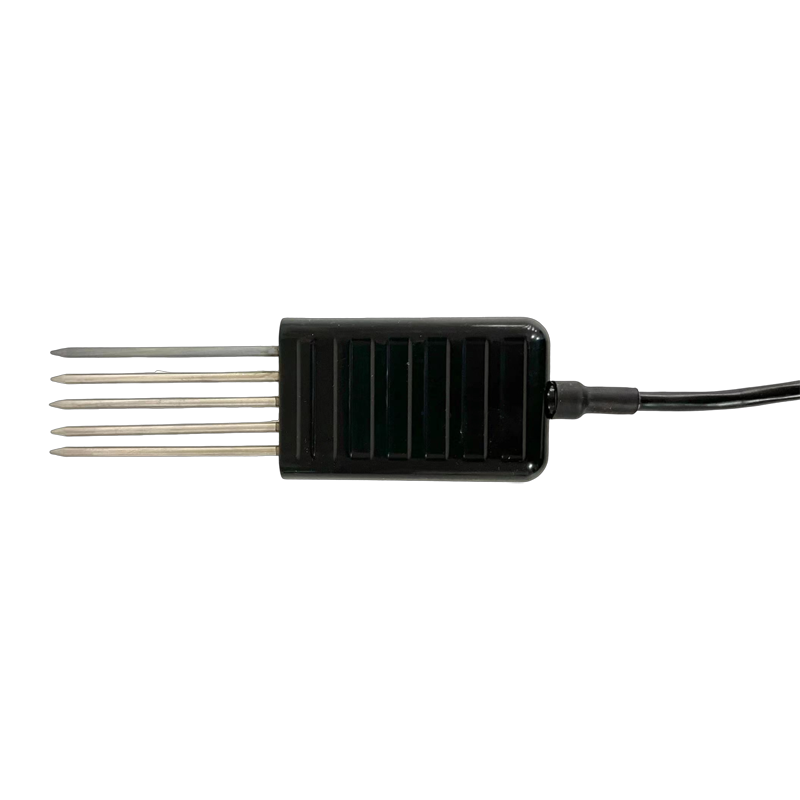
|
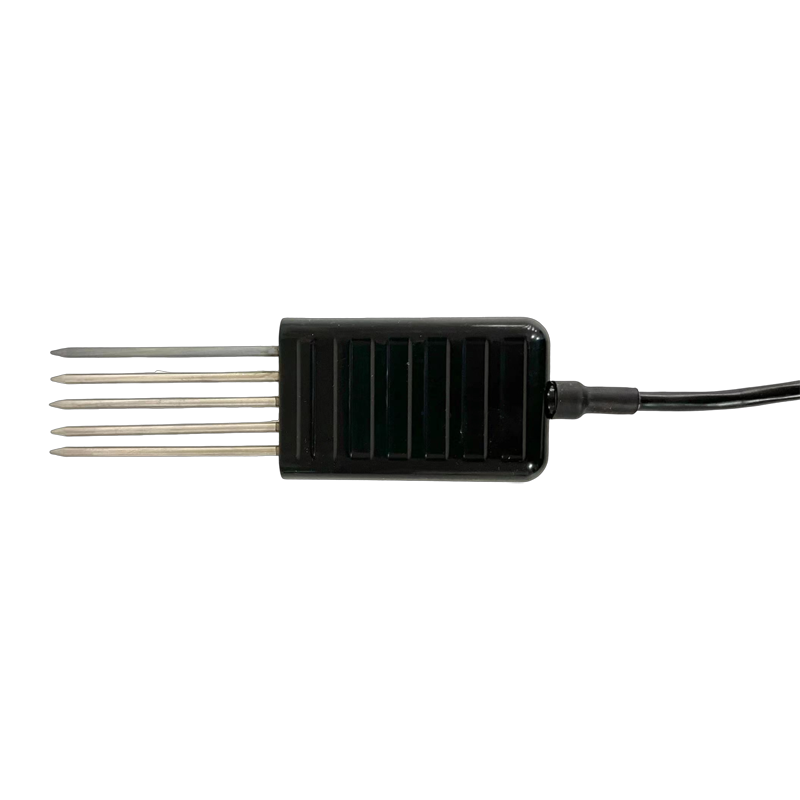
|
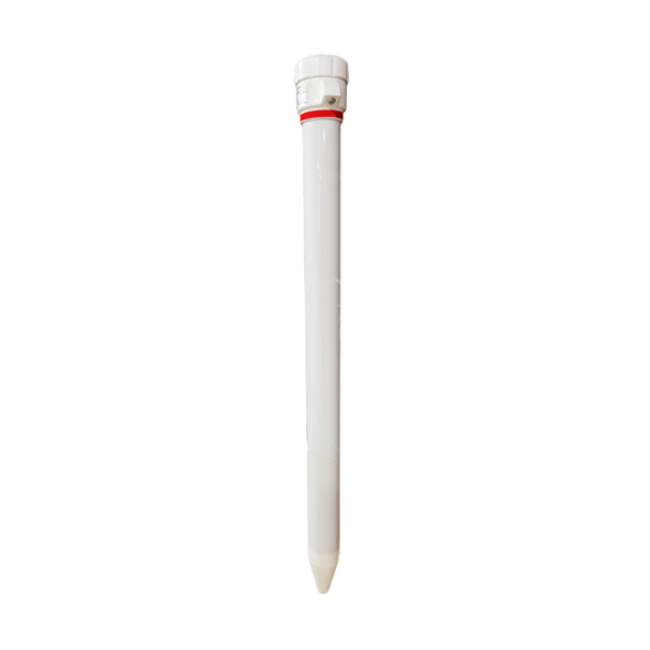
|
| 4-in-1 Soil Temperature Moisture EC Salt Sensor | 7 in 1 Soil Integrated Sensor | 8 in 1 Soil Integrated Sensor | Multi depth soil moisture sensor |
- Working Principle: Usually based on the Frequency Domain Reflectometry principle, where the sensor emits electromagnetic waves at a specific frequency and calculates soil moisture by measuring the reflection of these waves in the soil.
- Features: Fast measurement, high accuracy, easy operation, and data can be read directly on a display or exported to a computer for further analysis.
- Working Principle: Based on dielectric constant measurement, this device can dynamically observe moisture content and temperature at different soil depths.
- Features: It can detect multi-layer soil moisture and temperature conditions, and devices with an inclination angle can also monitor the tilt of the soil to determine its status, providing comprehensive soil moisture information.
- Function: Measures soil conductivity, moisture content, and temperature across multiple layers.
- Features: Uses 4G or RS485 transmission methods for data upload, enabling remote monitoring and data analysis through cloud platforms.
- Features: Utilizes the LoRa wireless communication protocol to avoid interference during signal transmission. It offers advantages such as low power consumption, long communication range, and strong penetration, making it suitable for measuring soil temperature and moisture with high precision, quick response, and stable output.
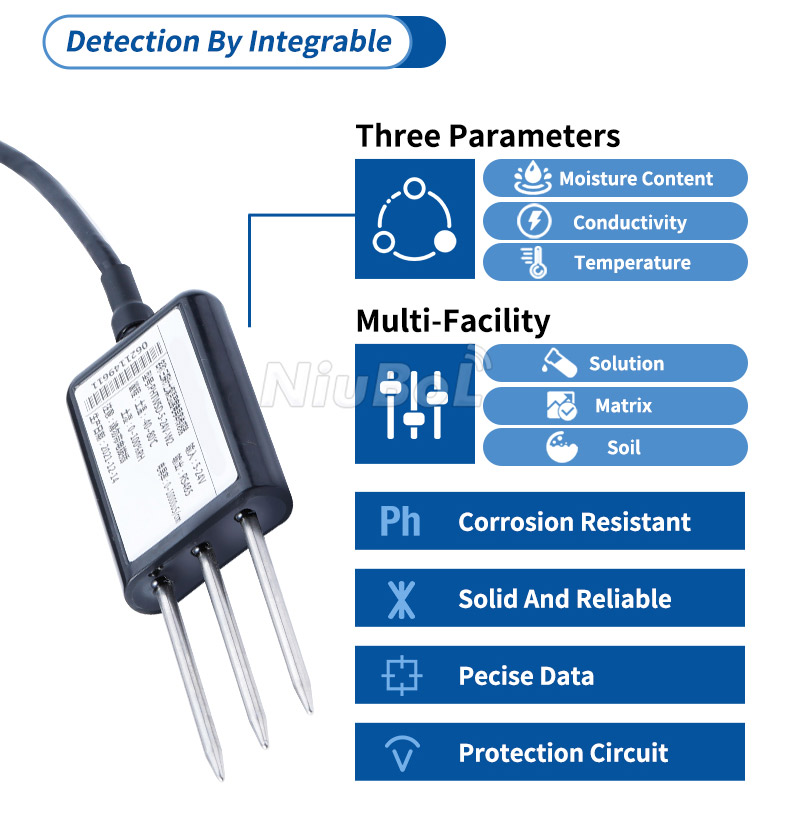
- Function: Real-time monitoring of soil moisture and temperature, supporting solar power and offering large data storage capacity and various communication methods.
- Application Scenario: Suitable for agriculture, ecology, and environmental monitoring fields.
- Working Principle: Measures the dielectric constant to determine the volumetric soil moisture percentage.
- Features: Suitable for farmland, greenhouses, and water-saving irrigation, providing accurate moisture content information.
- Function: Measures both soil temperature and moisture simultaneously.
- Features: Suitable for various soil types and reliable for long-term installation.
- Function: Combines moisture, temperature, and conductivity measurement.
- Features: Suitable for saline soil studies and precision agriculture.
- Measurement Range: Typically covers a humidity range from 0 to 100% RH and a wide temperature range.
- Accuracy and Resolution: Ensures data precision, such as ±3% humidity accuracy and 0.1% resolution.
- Power Consumption and Battery Life: Low power consumption design, supporting solar and battery-powered systems for long-term outdoor operations.
- Communication and Data Management: Built-in wireless communication supports remote data transmission and is equipped with cloud management platforms for easy data analysis and management.
- Agricultural Production: Optimizes irrigation schedules, enhancing crop yield and quality.
- Water Resource Management: Promotes efficient water use and supports water-saving irrigation.
- Environmental Monitoring: Assesses ecosystem health and supports environmental research and protection.
- Scientific Research: Provides essential data for soil science, plant physiology, and related research.
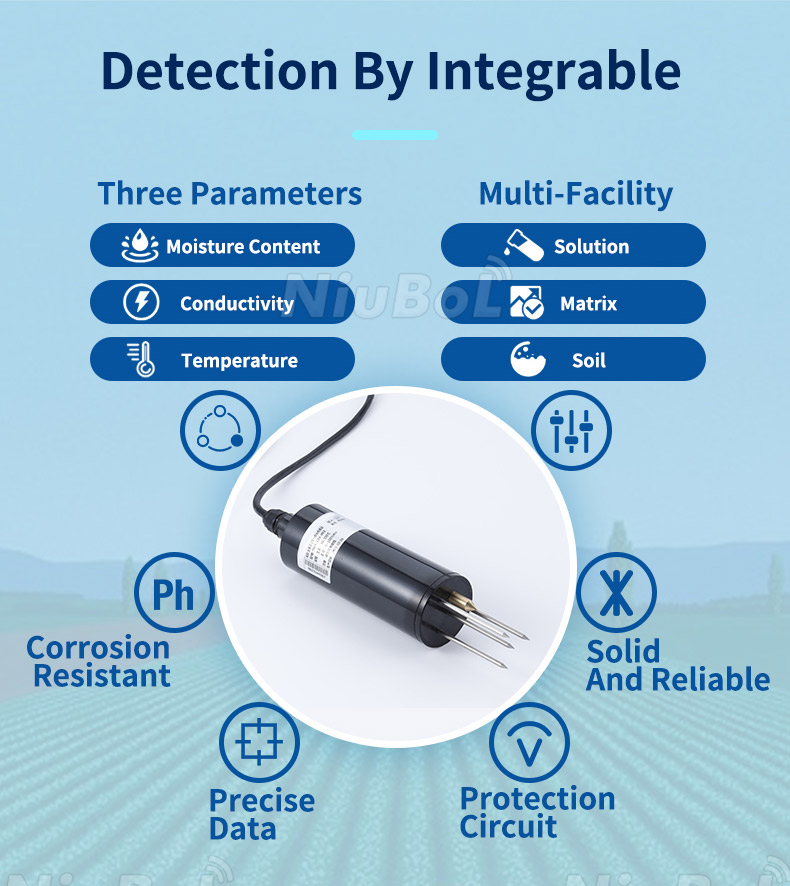
- Farmland: Adjusts irrigation based on crop water needs.
- Greenhouses: Precisely controls the environment to promote plant growth.
- Ecological Research: Monitors the water cycle in natural environments.
- Urban Greening: Optimizes water management for urban vegetation.
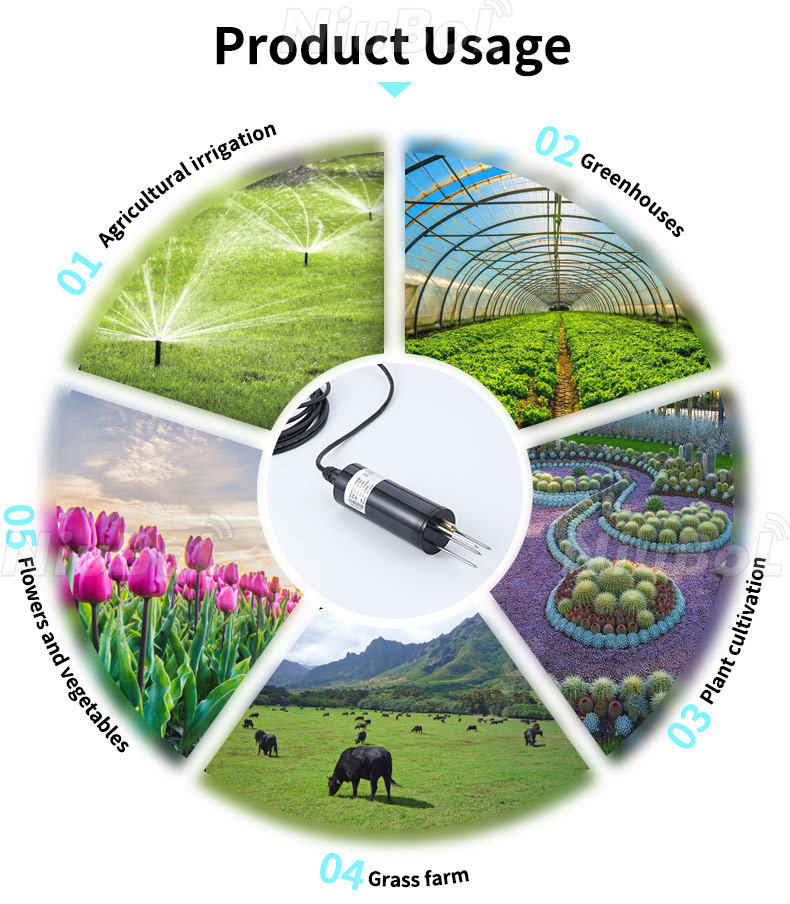
1. Application Requirements: Clarify the purpose of monitoring, such as monitoring surface soil moisture for irrigation guidance or deep soil moisture to understand root system effects.
- Surface (0-10 cm): Suitable for quick response to short-term moisture changes.
- Deep (10 cm and beyond): Used for long-term moisture dynamics analysis.
2. Crop Root Distribution: Choose the depth based on the root zone of the crops, ensuring sensors are placed in the primary root activity layer.
3. Soil Type: The conductivity and density of different soils affect signal attenuation.
- Sandy Soil: May require shallower installation depth to avoid rapid signal attenuation.
- Clay Soil: Might require deeper installation for stable signal reception.
4. Technical Specifications: Refer to the manufacturer’s recommended depth range.
5. Environmental Factors: Consider factors such as soil freezing depth and groundwater level.
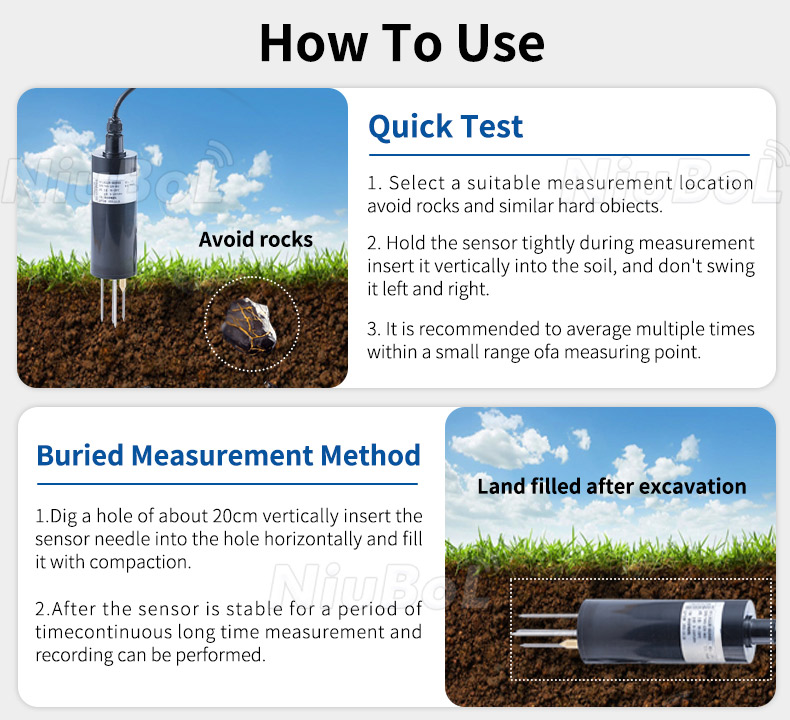
1. Dielectric Constant Differences: The dielectric constant varies with soil type, directly affecting measurement accuracy.
- Clay Soil: The dielectric constant changes significantly with moisture content, providing noticeable signal variations.
- Sandy Soil: Water content is low, and changes may not be as pronounced, requiring more sensitive sensors.
2. Conductivity Influence: Soil salinity (electrical conductivity) can interfere with measurements.
- High Conductivity: Can interfere with dielectric constant measurements, reducing accuracy.
3. Calibration and Standardization:
- Standard Calibration Curves: Provided by the manufacturer.
- Field Calibration: Performed by users in specific conditions to improve accuracy.
4. Installation Method: Ensure sensors are in good contact with the soil, avoiding air gaps.
5. Depth and Interference: Deep soil measurements may be complicated by physical structure differences or potential heterogeneity, requiring more precise sensors and possibly multiple calibrations.
Conclusion
Soil moisture monitoring equipment, with its high-precision measuring capabilities, provides essential data support for agricultural production and environmental protection. It helps optimize resource utilization and promotes sustainable development. When selecting the appropriate soil moisture monitoring equipment, factors such as measurement depth, soil type, and application requirements should be considered to ensure accurate and reliable soil moisture data.
1.NBL-S-THR Soil Temperature Moisture Sensor datasheet
NBL-S-THR-Soil-temperature-and-moisture-sensors-Instruction-Manual-V4.0.pdf
2. NBL-S-TMC Soil Temperature Moisture EC Sensor datasheet
NBL-S-TMC-Soil-temperature-and-moisture-conductivity-sensor.pdf
3. NBL-S-TM Soil Temperature Moisture Sensor datasheet
NBL-S-TM-Soil-temperature-and-moisture-sensor-Instruction-Manual-4.0.pdf
4. NBL-S-TMCS Soil Temperature, Moisture, Conductivity and Salinity Integrated Sensor
NBL-S-TMCS-Soil-Temperature-Humidity-Conductivity-and-Salinity-Sensor.pdf
5. NBL-S-TMCS-7 Soil Temperature, Moisture, NPK, Conductivity and pH Integrated Sensor
7-in-1-Soil-Composite-Sensor-Manual.pdf
4. NBL-S-TMCS-8 Soil Temperature, Moisture, NPK, pH, Conductivity and Salinity Integrated Sensor
Related recommendations
Sensors & Weather Stations Catalog
Agriculture Sensors and Weather Stations Catalog-NiuBoL.pdf
Weather Stations Catalog-NiuBoL.pdf
Related products
 Combined air temperature and relative humidity sensor
Combined air temperature and relative humidity sensor Soil Moisture Temperature sensor for irrigation
Soil Moisture Temperature sensor for irrigation Soil pH sensor RS485 soil Testing instrument soil ph meter for agriculture
Soil pH sensor RS485 soil Testing instrument soil ph meter for agriculture Wind Speed sensor Output Modbus/RS485/Analog/0-5V/4-20mA
Wind Speed sensor Output Modbus/RS485/Analog/0-5V/4-20mA Tipping bucket rain gauge for weather monitoring auto rainfall sensor RS485/Outdoor/stainless steel
Tipping bucket rain gauge for weather monitoring auto rainfall sensor RS485/Outdoor/stainless steel Pyranometer Solar Radiation Sensor 4-20mA/RS485
Pyranometer Solar Radiation Sensor 4-20mA/RS485
Screenshot, WhatsApp to identify the QR code
WhatsApp number:+8615367865107
(Click on WhatsApp to copy and add friends)
